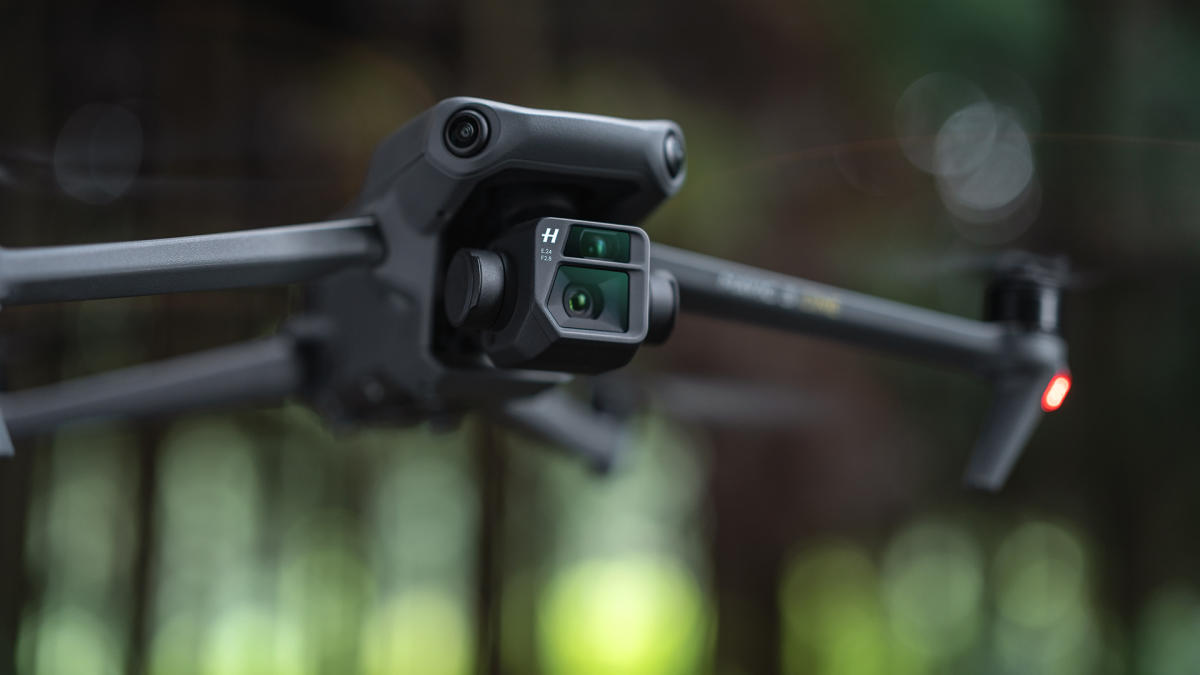- TECHSWU
- Posts
- TECHSWU #53
TECHSWU #53
Welcome to TECHSWU, your go-to destination for all things tech that matter in your daily life!



SoftBank Corp. has developed artificial intelligence (AI) technology that can transform angry customer voices into calm ones.
The company aims to reduce the psychological burden on call center operators by altering the voices of complaining customers to be less aggressive. The AI has been trained to recognize various emotions and adjust the pitch and inflection of the voice to make it sound softer and less threatening.
However, a slight element of anger is retained to ensure operators can still understand if a customer is upset. SoftBank plans to further improve the accuracy of the technology and hopes to sell it starting in 2025.
While AI is efficient at handling complaints, the company acknowledges that angry customers often want a human to apologize to them, so they hope the technology will serve as a "mental shield" for call center operators.

Apple has announced updates to its Vision Pro headset, introducing new commercial camera and editing abilities. The company is focusing on both enterprise and consumer applications for the device.
Apple is partnering with major corporations, including Disney, to create branded entertainment experiences using the Vision Pro. Users will also have the ability to capture and record personal 3D spatial recordings, which can be viewed on the headset.
To support the creation of immersive experiences, Apple is working with Blackmagic to develop a camera and editing system that can capture 8K 3D video with a 180-degree field of view and spatial audio effects. Additionally, Canon has unveiled a lens that is compatible with the Vision Pro, allowing users to capture 3D VR content.
The Vision Pro headset will be available for pre-order in several new regions this month.

In this engaging summary, the author expresses their enthusiasm for JBL's new portable, waterproof speakers. They describe themselves as the go-to person in their friend group for all tech needs, particularly when it comes to waterproof speakers.
They explain their previous experiences with other brands and how JBL's speakers have now become their top choice due to their compact size and lightweight. The author highlights the IP67 water and dust rating as a standout feature that makes these speakers ideal for outdoor activities.
They also mention the reasonable price tag and how they have already recommended the speakers to multiple friends. Overall, the author's tone is upbeat and relatable, making it clear that they are genuinely impressed with JBL's new speakers and believe they are a great addition to anyone's gadget rotation.


DJI, the leading maker of drones, now faces competition in the US from Anzu Robotics, a new company that licenses DJI technology. Anzu Robotics, launched by former Autel Robotics CEO Randal Warnas, has fast-tracked the creation of high-quality drones by using DJI's proven technology.
Unlike DJI, Anzu Robotics manufactures its drones in Malaysia and uses domestically-developed software, avoiding potential bans and restrictions on Chinese-made drone tech in the US. The move could be a challenge for US-based drone makers Skydio and Brinc, which have benefited from DJI's US troubles and have ceased production of their consumer drones.
Anzu Robotics plans to disrupt the US-based drone market by offering its drones at a lower price point than its rivals.


Revolutionary AI Training Boosts Human Performance in Robotic Exoskeletons - Say Goodbye to Fatigue!
Researchers at North Carolina State University have developed a new method that combines artificial intelligence (AI) with computer simulations to train robotic exoskeletons to assist users in conserving energy while walking, running, and climbing stairs. The AI-powered system allows the exoskeletons to autonomously learn how to provide the right amount of force to aid users without the need for lengthy human tests or manual control.
In testing, study participants using the robotic exoskeletons expended significantly less metabolic energy compared to when they were not using the exoskeletons. The researchers believe that this new method has the potential to rapidly develop and widely adopt assistive robots for both able-bodied individuals and those with mobility impairments.
They are also exploring how the technology could improve the performance of robotic prosthetic devices for amputees.


Discover the latest in tech and gadgets to recharge your lifestyle with BREO BOX. This quarterly subscription box is filled with vetted, useful tech and gadgets that you'll actually use every day.
With over 70,000 boxes shipped and a 4.6-star rating, you can trust that you're getting high-quality products that have been enjoyed by thousands of satisfied customers.
Here's how it works: first, the BREO BOX team curates useful, top-quality products from innovative brands. Then, you receive 4-8 tech and gadgets delivered to your doorstep every quarter.
Each box is carefully designed to enhance your lifestyle and provide you with unique and fun items that you won't find anywhere else.
Not sure if it's for you? No problem! You can easily re-gift any items that may not be your style.
And with past boxes featuring products like a filtered water bottle, smart fragrance diffuser, and smart key organizer, you'll always be surprised and delighted by what's inside.
Join the thousands of subscribers who have already discovered the joy of BREO BOX and get ready to upgrade your tech game.
Get the Box today and start enjoying the best tech and gadgets of the season.

Rio de Janeiro has partnered with C40 to decarbonize its road freight industry. This initiative leverages a $10 million commitment from the Climate Pledge to accelerate the deployment of zero-tailpipe-emission electric trucks in the city.
As Brazil's second-largest city, Rio de Janeiro has played a key role in the global climate agenda, hosting events such as the 1992 Earth Summit and the Rio+20 Initiative. By decarbonizing road freight, the city aims to reduce carbon emissions and combat climate change.
This partnership aligns with Rio de Janeiro's commitment to sustainable and environmentally friendly practices. Electric trucks produce zero tailpipe emissions, making them a more sustainable alternative to traditional diesel trucks.
This collaboration between Rio de Janeiro and C40 represents a significant step towards achieving a greener and more sustainable future for the city.



Electric cars have gained popularity in India in recent years, but there are still many people who are hesitant to embrace the technology. One reason is the lack of charging networks in the country, with charging stations being more readily available in main cities than in the suburbs.
Range anxiety is also a major concern, as people worry about how far the car can travel on a single charge and fear getting stranded without access to a charging station. Additionally, there is a misconception that electric cars are prone to catching fire, although statistics show that they are actually less likely to catch fire than petrol, diesel, or hybrid cars.
Another factor contributing to people's hesitancy is the limited options available in the EV market in India. Resale value is also a concern, as there is no proven track record for EVs in the country.
Finally, there is a lack of awareness and understanding about electric cars among the general population. However, with advancements in technology and more options expected to enter the market in the coming years, these concerns may be alleviated.


The COVID-19 pandemic has accelerated the adoption of wearable technology in the medical sector, particularly for remote monitoring and telemedicine. In line with this trend, Apple Watch users can now access glucose data from older DexCom continuous glucose monitoring (CGM) devices, eliminating the need for an iPhone.
Previously, users had to rely on their iPhones to relay glucose data, resulting in potential delays and incomplete information. The integration of wearables into medical practices is transforming the management of diabetes, allowing for real-time glucose monitoring directly on the wrist.
The wearable tech industry is expected to be worth $290.6 billion by 2030, driven by increased sales of smartwatches and hearables, as well as advancements in artificial intelligence (AI).
The adoption of these technologies in healthcare is paving the way for a more connected and proactive approach to diabetes management.

Personalization has always been a goal for the banking industry, but achieving true personalization has been a challenge. Banks have struggled to engage with their customers on a deeper level, beyond just offering the right products at the right time.
However, with the advent of Generative Artificial Intelligence (GenAI), banks are now able to unlock the potential for genuine personalization. GenAI allows banks to proactively engage with customers through conversational AI, understanding their needs and providing a more intuitive and personalized banking experience.
This technology also revolutionizes product manufacturing, allowing banks to rapidly prototype and customize financial products based on customer input. Additionally, GenAI can automate and streamline compliance processes, simplifying the regulatory landscape for banks.
With these advancements, the banking industry is on the cusp of a new era where personalization is not just a buzzword, but a reality powered by GenAI.

In this article, the author shares five essential gadgets that they pack in their carry-on to avoid digital disconnect while traveling. The author, who has been a digital nomad for eight years, emphasizes the importance of staying connected and powered up, especially in the event of unexpected delays or cancellations.
The gadgets mentioned include the RoamWiFi 4G LTE Mobile Hotspot Router, which provides reliable internet connectivity, the EPICKA Universal Travel Adapter, which allows for easy charging in different countries, the Anker Mini Power Strip Extension Cord, which provides multiple outlets and USB ports, the Anker MagGo Power Bank, which keeps electronic devices charged during long trips, and the Tonmom Laptop Stand, which provides ergonomic support while working on a laptop. The author highlights the convenience and peace of mind that these gadgets bring, and suggests considering them for upcoming trips.
Foldable phones have come a long way in recent years, and there are now several great options available on the market. Samsung's Galaxy Z Fold 5 and Z Flip 5 offer a solid balance of features and price, making them top picks.
Google's first folding phone, the Pixel Fold, is also worth considering, despite a few quirks. Motorola's Razr Plus and Razr 2023 provide affordable alternatives, and OnePlus's first foldable phone, the Open, stands out with its unique design.
While foldable phones are more expensive than regular smartphones, they offer a fun and eye-catching experience. When choosing a foldable phone, it's important to consider factors such as size, camera quality, and software support.
Overall, foldable phones are a luxury option for buyers with deeper pockets who want something different and innovative in their smartphone experience.



